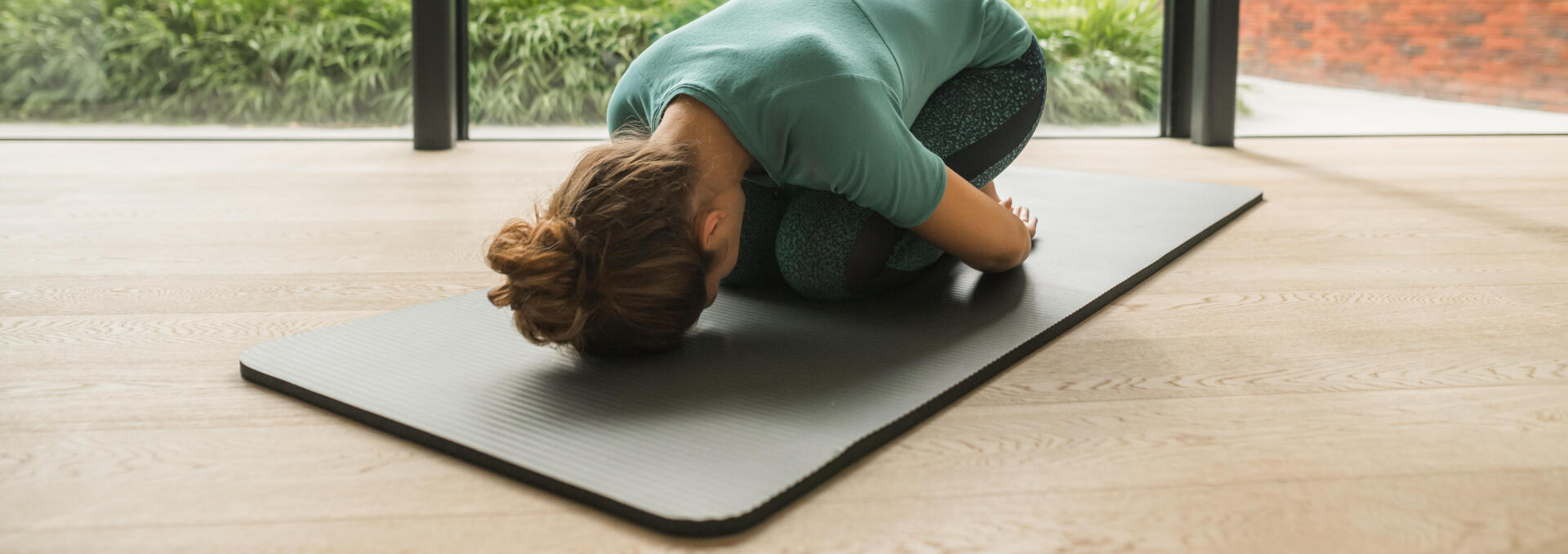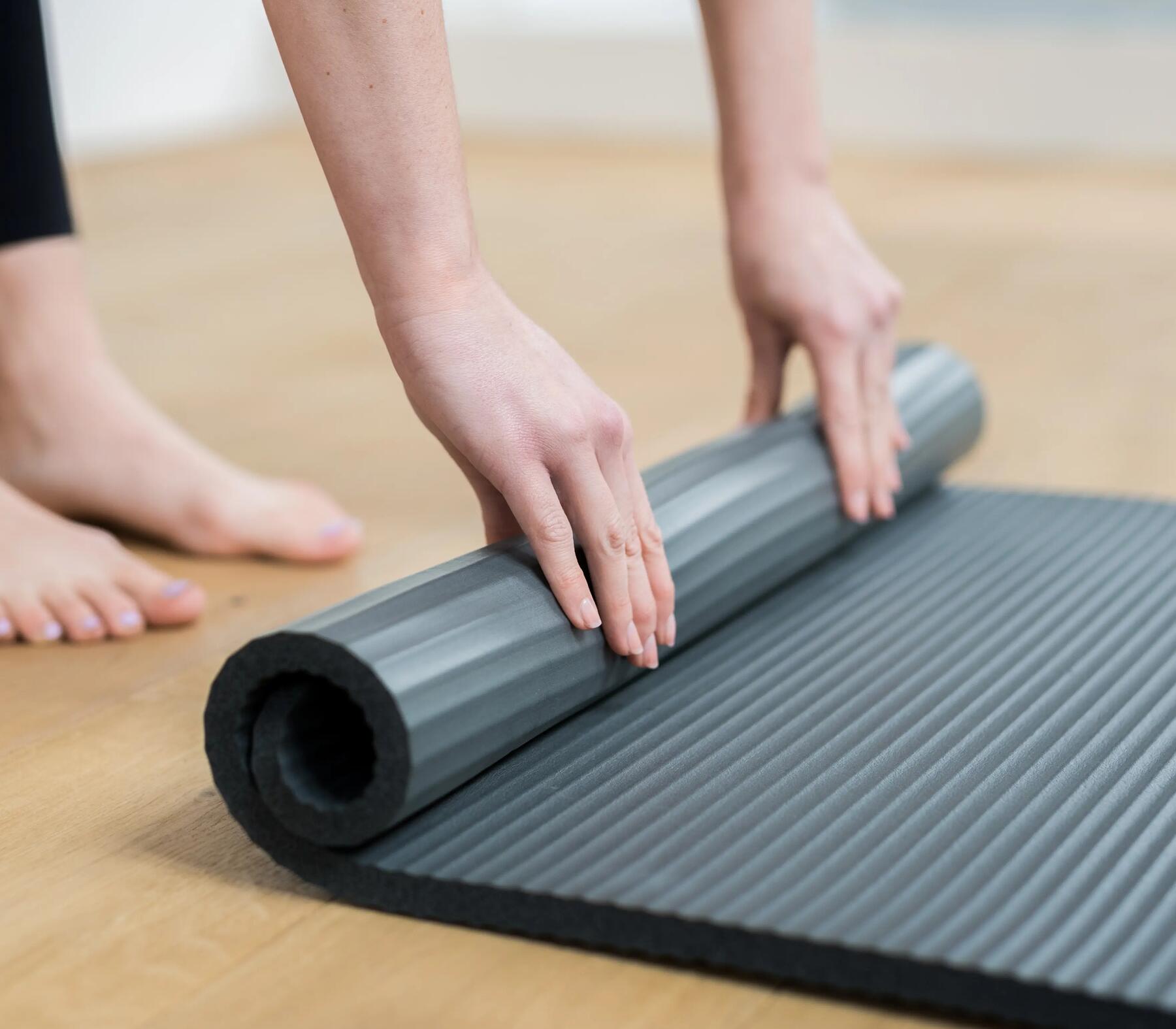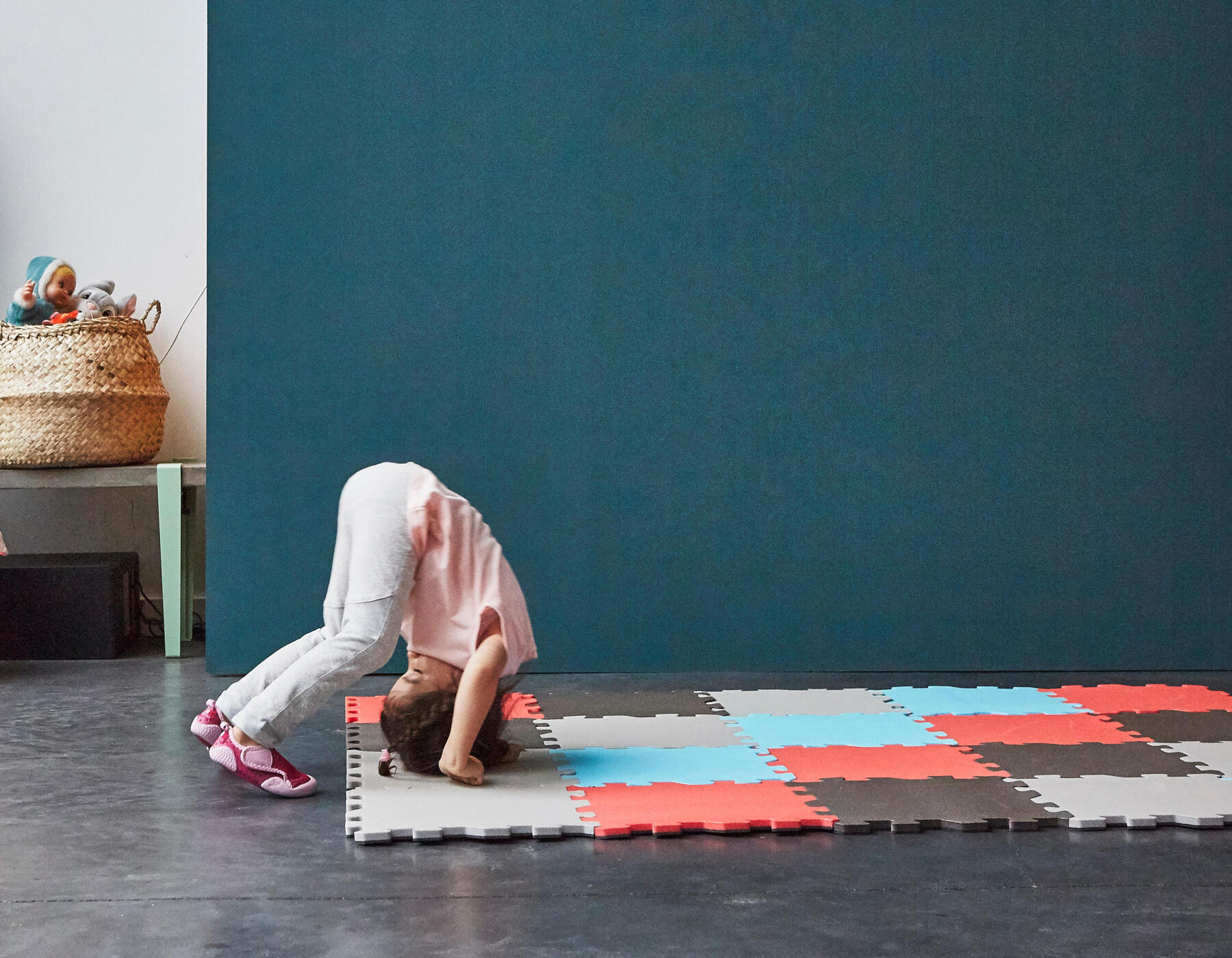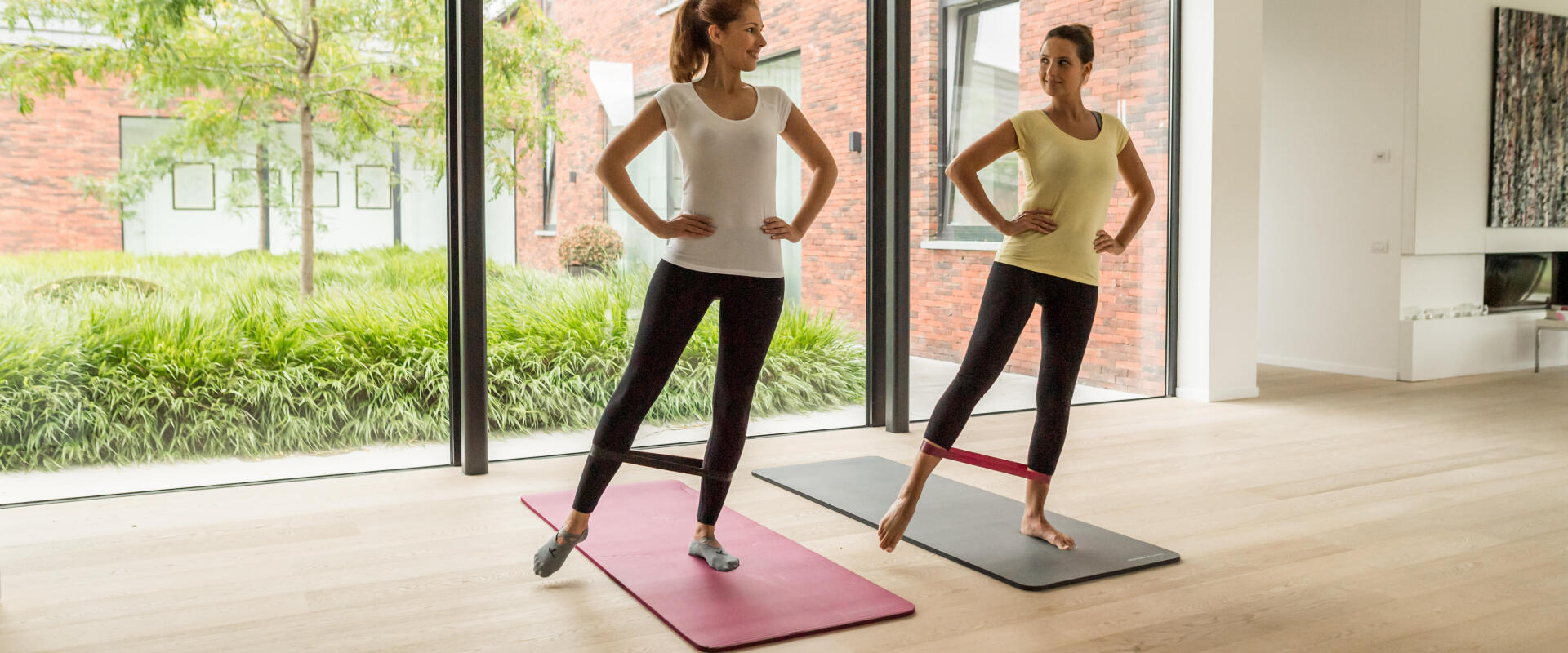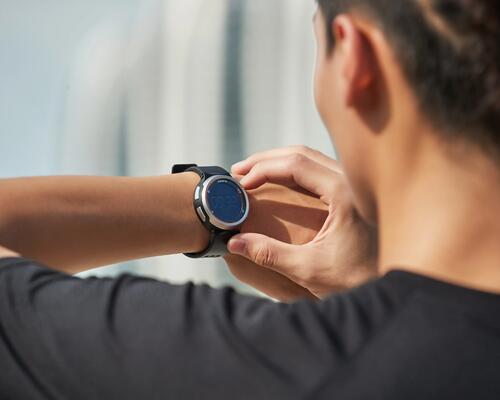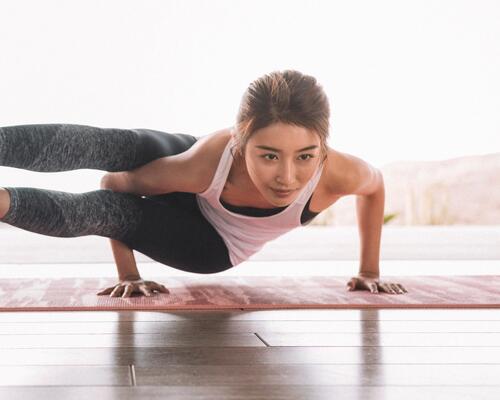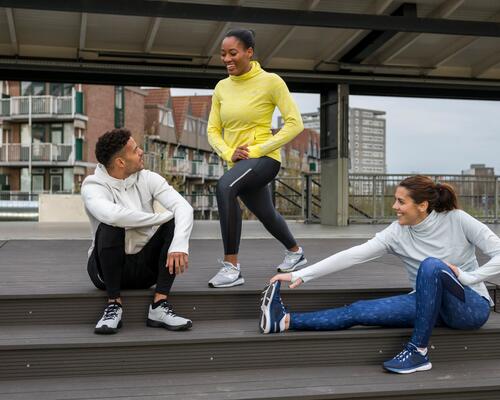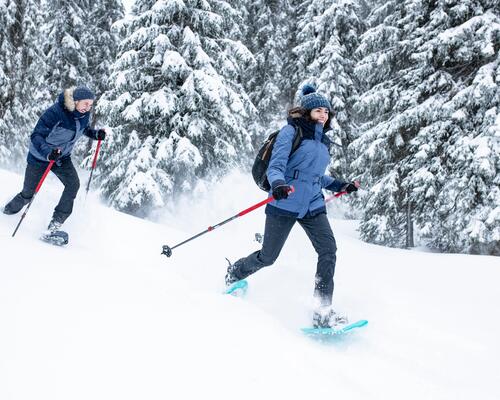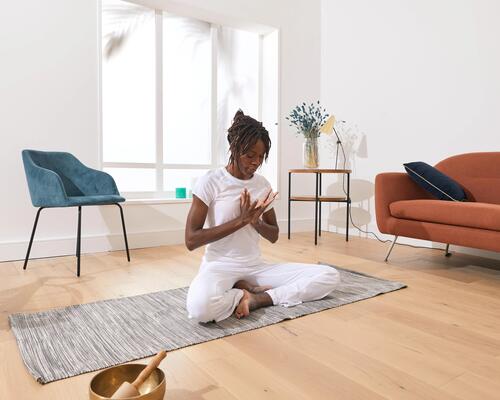Types of mats
AEROBIC MATS FOR PILATES AND GENTLE FITNESS
When it comes to Pilates and gentle fitness classes, you will be spending a lot of time in a seated position, on your knees or on your back. That’s why comfort comes first, and the mats used for these activities are generally thicker and more dense. For convenient transport and storage, go for a model that rolls or folds easily.

